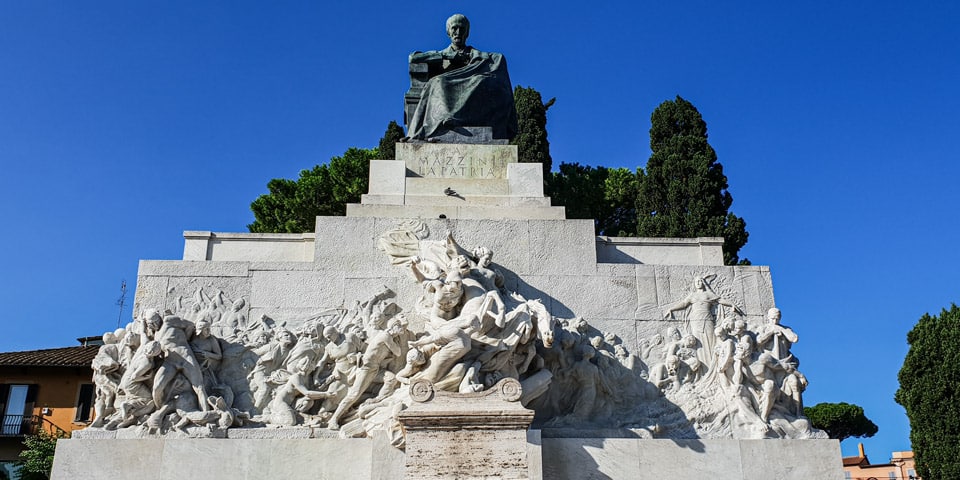

989365 travellers read
Written by: Artur Jakucewicz

| Address | Piazzale Ugo La Malfa, Rome |
|---|
Set at the entrance to one of Rome’s most enchanting districts, the Monument to Giuseppe Mazzini (Monumento a Giuseppe Mazzini) stands as both a tribute to a visionary of Italian unification and a convenient landmark for visitors exploring the Aventine Hill.
Perfectly situated roughly opposite the midpoint of the Circus Maximus—just before the climb to the Aventine—it is hard to miss this grand monument as you make your way towards the celebrated Rose Garden (Roseto Comunale di Roma) or the panoramic Orange Garden (Giardino degli Aranci).
For anyone interested in history, politics, or simply seeking a meaningful stop on their Roman stroll, pausing here offers a chance to pay homage to a founding father of modern Italy. The monument’s powerful imagery, set against cypresses and Roman pines, invites reflection on the ideals that shaped Italy.
Contents
ToggleGiuseppe Mazzini (1805–1872) is one of the most celebrated figures of the Italian Risorgimento—the movement for Italian unification. Born in Genoa, Mazzini was a passionate patriot, philosopher, and one of the first modern European revolutionaries to advocate for a united, free, and democratic Italy.
Today, Mazzini is remembered as “the soul of Italy,” a symbol of idealism, sacrifice, and the enduring quest for freedom and unity.
The Monument to Giuseppe Mazzini is impossible to overlook—not just for its size, but for the energy and emotion it radiates. Created by the Italian sculptor Ettore Ferrari, this impressive work was unveiled in 1949, after years of delays caused by two world wars. Today, it remains one of the most significant tributes to a hero of Italy’s unification.
The structure itself is monumental in scale: Mazzini sits high above the street, his bronze figure nearly four metres tall, surveying the city he dreamed of uniting. The base is made of gleaming white marble, its broad steps and sharp lines giving a sense of strength and solidity—a fitting foundation for the father of Italian republicanism.
But what really sets this monument apart is the dramatic marble bas-relief that stretches across the front. Unlike static statues, these swirling scenes are packed with movement and feeling. At the centre, a heroic figure on horseback charges forward, surrounded by men and women caught up in the struggle for freedom. Look closely and you’ll spot workers, artisans, mothers, students, and soldiers—all classes and ages, all straining together towards a common cause. Some are brandishing hammers, others reach out with open hands, while a woman in flowing robes seems to guide the crowd onward, embodying the spirit of “La Patria”—the Fatherland.
Every detail of the bas-relief tells a part of the story: the sacrifices made, the battles fought, and the ideals pursued. It’s a celebration of unity, courage, and the power of ordinary people to shape their nation’s destiny—ideas that were at the heart of Mazzini’s philosophy. The monument seems to say: the road to freedom is neither easy nor solitary, but achieved together through shared hope and struggle.
On a practical note, the monument measures around 13 metres high and dominates the small square at the Aventine’s entrance. Its inscription, “MAZZINI / LA PATRIA,” leaves no doubt about the purpose of this place: to honour not only the man, but the country he helped inspire.
Author: Artur Jakucewicz
This website uses cookies. For more info read the cookies policy
RomeItaly.guide © 2025. Created with love by Roman experts and guides.